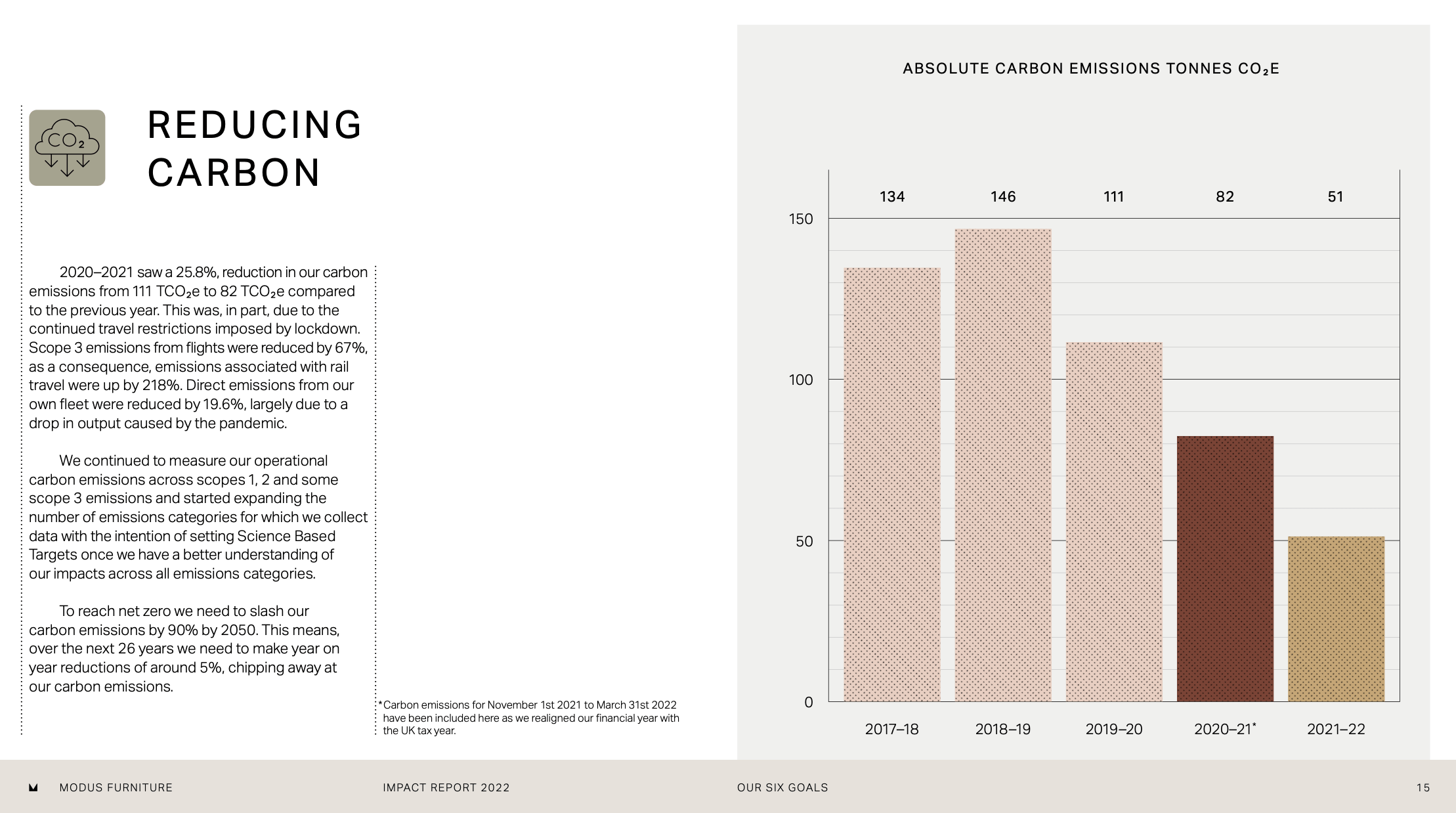
Thinking about publishing your first sustainability report or preparing your next one?
In this page, you will find answers to the most common questions and challenges that arise when preparing a sustainability report in a furniture company.
Let's start with a basic question.
Why should you invest your time and company's money into crafting a sustainability report?
We identified three main reasons:
On average, preparing a first sustainability report takes 2 to 4 months.
It's not a full-time job, and it accounts for all the back-and-forth discussions with your colleagues and suppliers.
Subsequent reports can be much quicker to prepare, with experienced ESG leaders being able to wrap up their report in under a month.
Preparing a sustainability report is a team effort.
You'll have to talk to the design team to know more about the materials being used in your products.
You're also very likely to chat with the purchasing or sourcing team to learn more about your production facilities.
Your sales team will also be interested in highlighting specific efforts that are particularly valued by your company's prospects.
And you will need support from top management to justify these efforts internally.
Let's start with a quick definition of material impacts.
Material impacts refer to the economic, environmental, and social effects that are significant enough to influence the decisions of stakeholders (such as investors, customers, regulators, and employees). These are the impacts that are the most important to discuss in your impact report.
To identify your material impacts, we recommend:
Here is what the result of this assessment looked like for Room and Board as shared by their ESG leader in a webinar.

If you don't know where to start to identify the impact categories, we recommend checking the 17 Sustainable Development Goals (SDG) of the United Nations.

Once you've identified your material impacts, set specific Key Performance Indicators (KPIs) for each.
For example:

Then, the data collection process can start.
Be careful not to be too ambitious, especially if it's your first report.
And make sure to monitor where you source the data for each data point to make the process smoother for the next edition of your report.
Yes, you can be creative and include whatever sections you want in your report.
But we've found some of the below sections to be inevitable.
Ideally, you will start your report with a foreword written by the CEO to show the commitment of your company's leadership.
This is what the page looks like in Steelcase’s 2023 impact report.

This section will help your readers understand what your company does and what makes it stand out.
Here’s an example taken from Modus’ impact report.

This section is particularly recommended if your company has been investing in sustainability over multiple years.
Here's an example taken from BoConcept's 2024 report:

Once you've shared your foreword, company presentation and timeline, it's time to switch the focus to your material impacts.
Here is Zeitraum's materiality assessment page (taken from their 2023 report)

This section's goal is to share your latest achievements.
It's usually your sales team's favorite page.
Here's one example taken from Modus' impact report.

After the highlights, it's time to dig deeper into each area of impact.
We recommend creating a dedicated subsection with trends, achievements, and next steps for each material impact category.

Looking for further inspiration?
You can check this database of sustainability reports from furniture and bedding companies that we've gathered.


